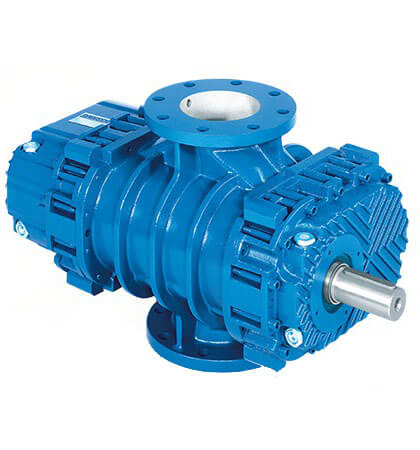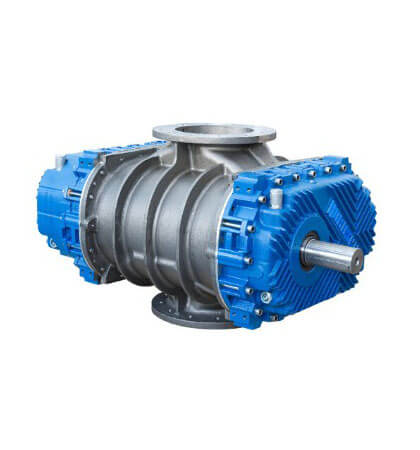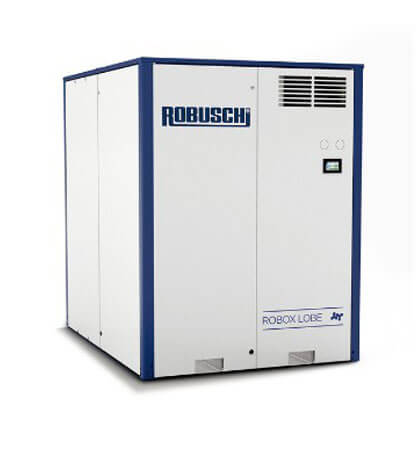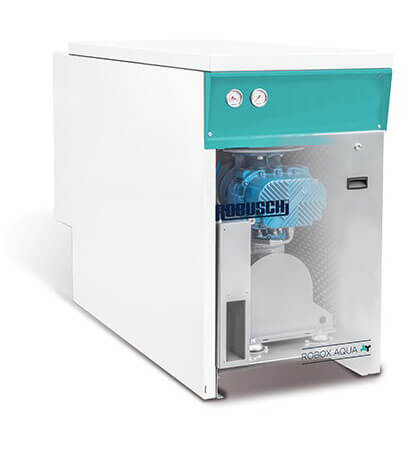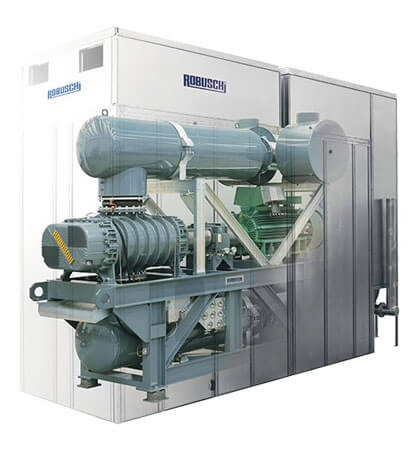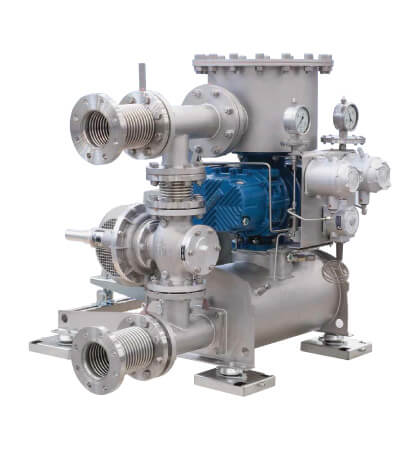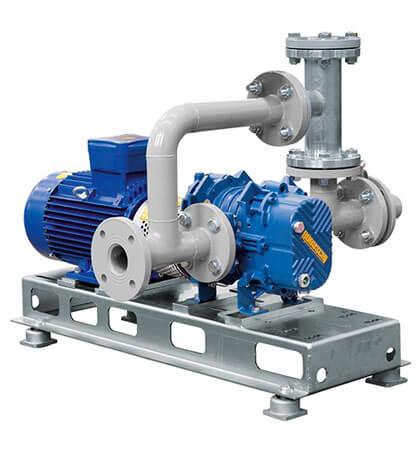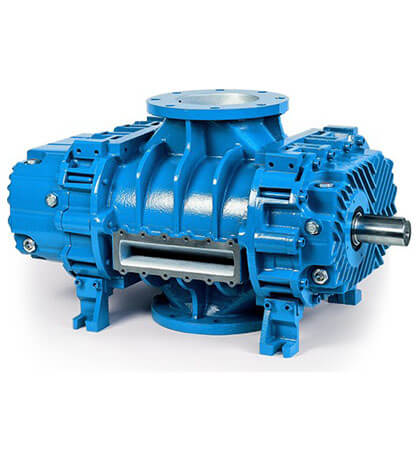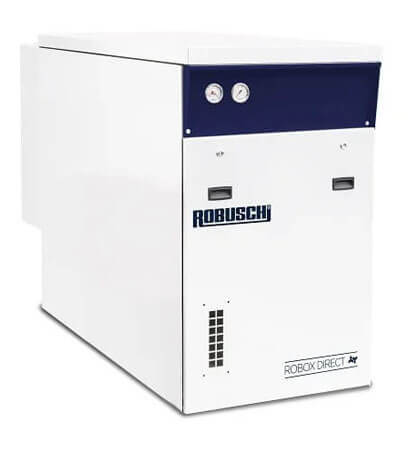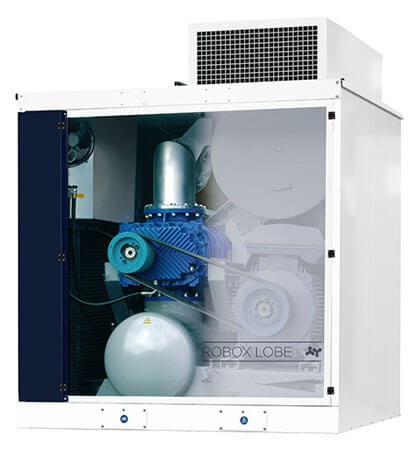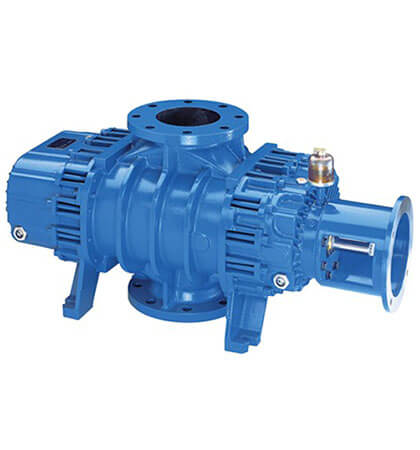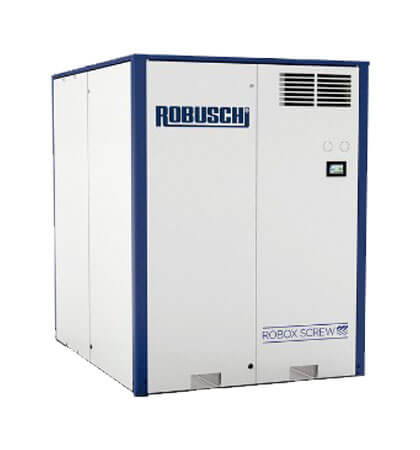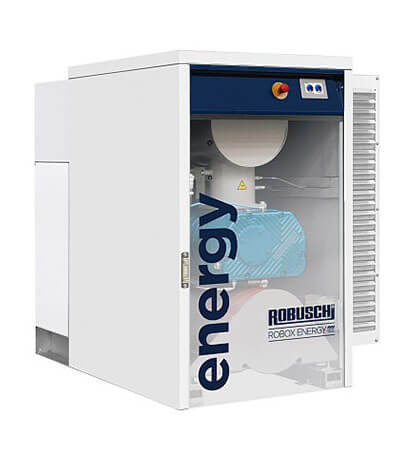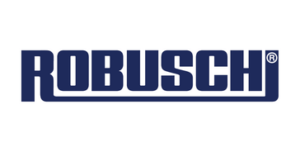A Robuschi positive displacement blower conveys gas or air from the upper inlet port into the stage using two parallel rotary pistons. These are mounted within a housing also called a conveying chamber. The pistons rotate in opposite directions and facilitate gas or air conveyance from the top to the bottom. Positive displacement blowers are also known as PD blowers or rotary air blowers. There are two types of positive displacement blowers; lobe and screw.
Lobe Positive Displacement Blower
A positive displacement lobe blower conveys a relatively constant volume of gas from the inlet to the discharge point. It follows the isochoric compression principle, also known as external compression. In this principle, the medium (gas or air) is forced from an atmospheric condition into a system with a given resistance (back pressure) to achieve the relevant pressure increase. For this reason, positive displacement lobe blowers are not considered compressors. The amount of gas the machine handles is fixed by the configuration of its casing and its rotating parts.
Screw Positive Displacement Blower
In a positive displacement screw blower, the rotors turn in opposite directions and maintain precise alignment by means of timing. When the rotors mesh, they form a series of working chambers between the rotors and the casing wall. The gas is sucked from the intake side (suction) and trapped between the rotors and the casing (radially), and the cover (axially). It is then transported to the compression side (discharge) where the working chamber shrinks, and the air or gas is compressed. The internal compression leads to a supply of steady, non-pulsating air flow. This minimises vibration and maintenance to maximise the lifespan of the blower.
